
Happiness is not an easy concept to measure. It is influenced by different factors that vary from person to person. It may frequently change, depending on an endless set of dynamic circumstances, including social, financial, and health status — each of which may also depend on personal preference. While the emotion may be difficult to quantify, some general factors that tend to lead to better overall well-being are easier to measure.
24/7 Tempo reviewed the 2019 Gallup Well-Being Index, which is based on responses from more than 115,000 U.S. adults aged 18 and older. It is intended to capture how people feel about their lives and what they experience on a daily basis. The index consists of five categories: social relationships, financial security, relationship to community, physical health, and career prospects. (These are the 25 highest paying jobs.)
The overall well-being in the United States has been in steady decline since 2016. “It dropped substantially in 2017 and a little further in 2018, despite improvements in the economy,” said Dan Witters, research director for the Gallup National Health and Well-Being Index. “In 2017, 21 states showed decline in well-being and no state improved — we had never seen anything like that,” he said.
Last year was much more balanced, but it also slightly worsened compared to 2017, he noted For example, Hawaii’s well-being score declined somewhat from the previous year. Despite this, the state is No. 1 in this year’s ranking, up from No. 3 in last year’s ranking, Witter noted. This shows that the well-being of many other states worsened significantly, he noted.
The factors that played the biggest role in this year’s ranking were based around relationships, Witters said. Exercise and smoking indicators improved a little, obesity and diabetes remained unchanged, but emotional and social well-being worsened, he noted. “Depression rates are up and so is daily stress and worry.” Having a sense of purpose as well as getting positive energy from friends and family worsened significantly, too, Witters added. On a global scale, these are the happiest countries in the world.
Click here to see the 20 happiest states in America.
Click here for our detailed findings.
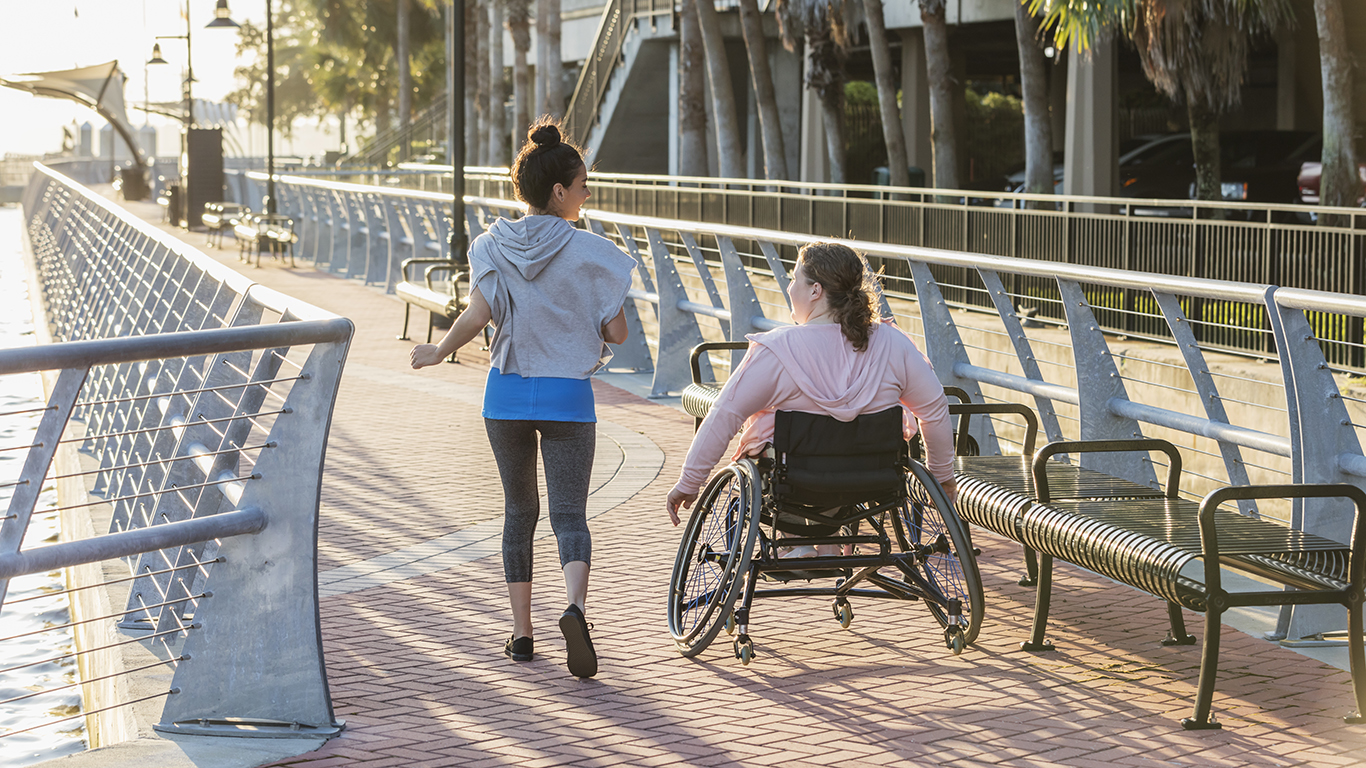
20. Florida
> Adults who like what they do every day: 58.6% (15th highest)
> Adults in near perfect physical health: 40.1% (10th highest)
> Adults who learned or do something interesting every day: 47.5% (11th highest)
> Adults who get positive energy from friends and family every day: 59.9% (12th highest)
> Poverty rate: 14.0% (2nd highest)
> Violent crime rate: 408 per 100,000 people (7th highest)
See all stories featuring: Florida
[in-text-ad]

19. Nevada
> Adults who like what they do every day: 58.3% (16th highest)
> Adults in near perfect physical health: 37.0% (19th highest)
> Adults who learned or do something interesting every day: 45.5% (20th highest)
> Adults who get positive energy from friends and family every day: 59.2% (14th highest)
> Poverty rate: 13.0% (5th highest)
> Violent crime rate: 556 per 100,000 people (2nd highest)
See all stories featuring: Nevada

18. Nebraska
> Adults who like what they do every day: 59.8% (10th highest)
> Adults in near perfect physical health: 40.4% (9th highest)
> Adults who learned or do something interesting every day: 47.0% (14th highest)
> Adults who get positive energy from friends and family every day: 59.2% (14th highest)
> Poverty rate: 10.8% (12th highest)
> Violent crime rate: 306 per 100,000 people (11th highest)
See all stories featuring: Nebraska

17. Massachusetts
> Adults who like what they do every day: 56.2% (19th highest)
> Adults in near perfect physical health: 41.5% (5th highest)
> Adults who learned or do something interesting every day: 46.7% (15th highest)
> Adults who get positive energy from friends and family every day: 60.9% (9th highest)
> Poverty rate: 10.5% (13th highest)
> Violent crime rate: 358 per 100,000 people (10th highest)
See all stories featuring: Massachusetts
[in-text-ad-2]
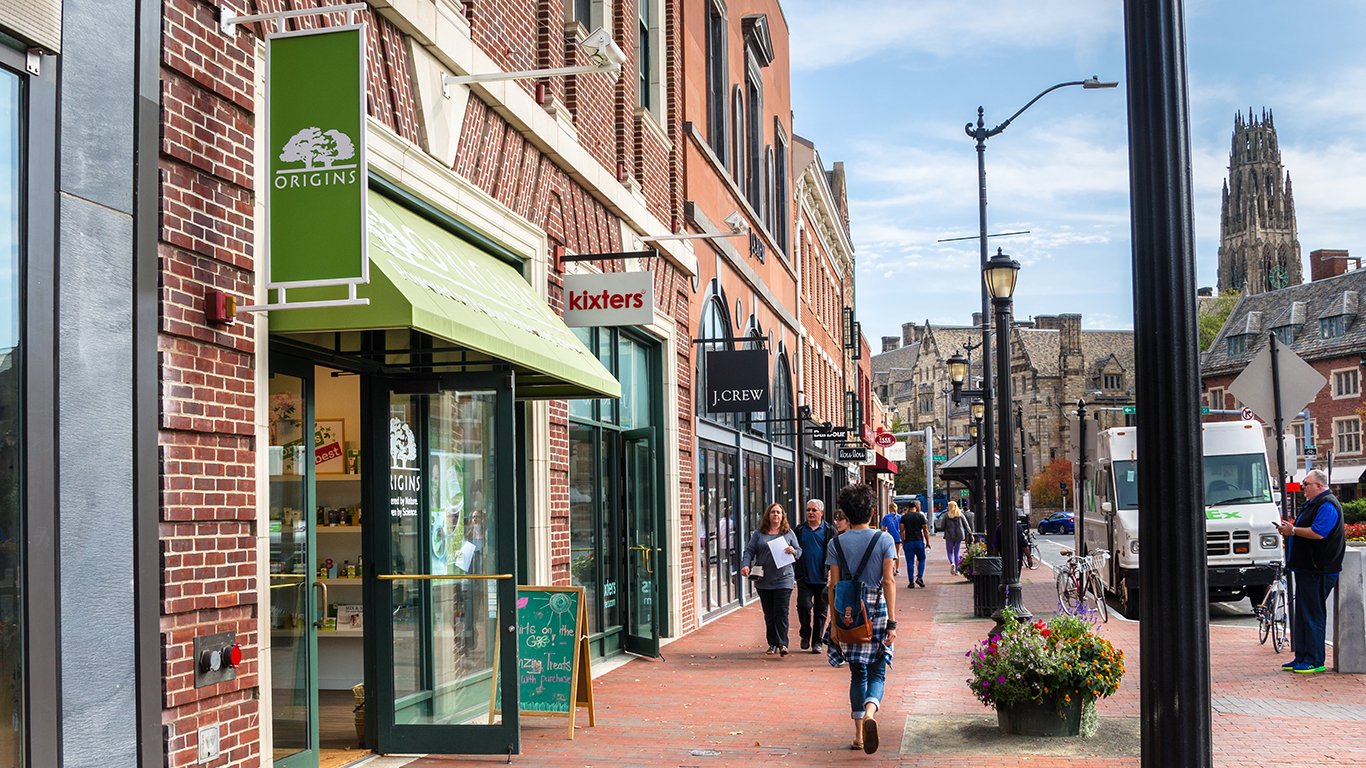
16. Connecticut
> Adults who like what they do every day: 60.2% (8th highest)
> Adults in near perfect physical health: 43.0% (3rd highest)
> Adults who learned or do something interesting every day: 47.2% (13th highest)
> Adults who get positive energy from friends and family every day: 60.3% (11th highest)
> Poverty rate: 9.6% (17th highest)
> Violent crime rate: 228 per 100,000 people (18th highest)
See all stories featuring: Connecticut

15. Arizona
> Adults who like what they do every day: 60.0% (9th highest)
> Adults in near perfect physical health: 39.5% (11th highest)
> Adults who learned or do something interesting every day: 50.3% (3rd highest)
> Adults who get positive energy from friends and family every day: 60.6% (10th highest)
> Poverty rate: 14.9% (the highest)
> Violent crime rate: 508 per 100,000 people (3rd highest)
See all stories featuring: Arizona
[in-text-ad]

14. California
> Adults who like what they do every day: 57.4% (17th highest)
> Adults in near perfect physical health: 40.8% (7th highest)
> Adults who learned or do something interesting every day: 47.3% (12th highest)
> Adults who get positive energy from friends and family every day: 61.3% (6th highest)
> Poverty rate: 13.3% (4th highest)
> Violent crime rate: 449 per 100,000 people (5th highest)
See all stories featuring: California

13. Washington
> Adults who like what they do every day: 58.9% (14th highest)
> Adults in near perfect physical health: 38.4% (14th highest)
> Adults who learned or do something interesting every day: 49.0% (8th highest)
> Adults who get positive energy from friends and family every day: 61.3% (6th highest)
> Poverty rate: 11.0% (11th highest)
> Violent crime rate: 304 per 100,000 people (12th highest)
See all stories featuring: Washington

12. Minnesota
> Adults who like what they do every day: 59.3% (12th highest)
> Adults in near perfect physical health: 38.2% (15th highest)
> Adults who learned or do something interesting every day: 48.7% (9th highest)
> Adults who get positive energy from friends and family every day: 58.8% (16th highest)
> Poverty rate: 9.5% (18th highest)
> Violent crime rate: 238 per 100,000 people (16th highest)
See all stories featuring: Minnesota
[in-text-ad-2]
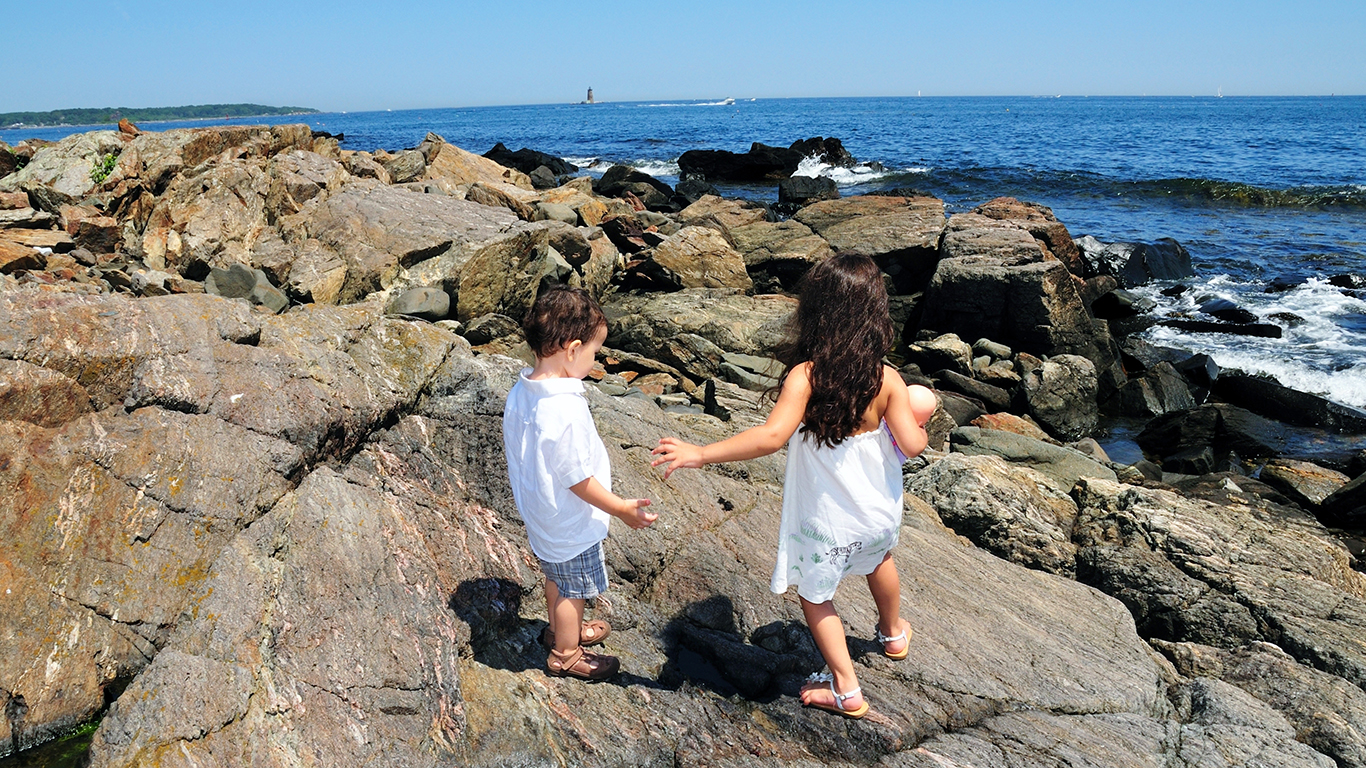
11. New Hampshire
> Adults who like what they do every day: 57.1% (18th highest)
> Adults in near perfect physical health: 35.3% (20th highest)
> Adults who learned or do something interesting every day: 45.7% (18th highest)
> Adults who get positive energy from friends and family every day: 57.6% (20th highest)
> Poverty rate: 7.7% (20th highest)
> Violent crime rate: 199 per 100,000 people (19th highest)
See all stories featuring: New Hampshire

10. North Dakota
> Adults who like what they do every day: 62.2% (3rd highest)
> Adults in near perfect physical health: 41.2% (6th highest)
> Adults who learned or do something interesting every day: 46.1% (17th highest)
> Adults who get positive energy from friends and family every day: 58.5% (17th highest)
> Poverty rate: 10.3% (14th highest)
> Violent crime rate: 281 per 100,000 people (13th highest)
See all stories featuring: North Dakota
[in-text-ad]
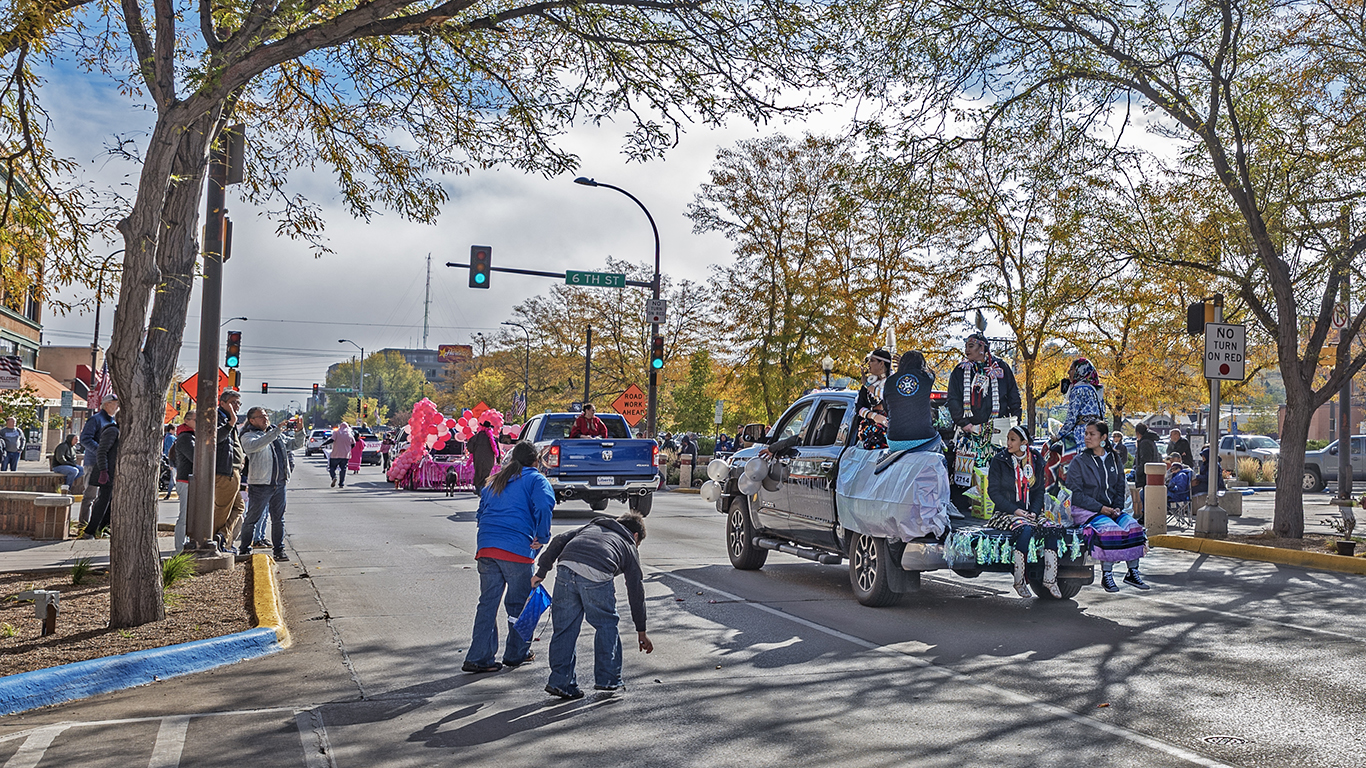
9. South Dakota
> Adults who like what they do every day: 61.3% (4th highest)
> Adults in near perfect physical health: 37.7% (16th highest)
> Adults who learned or do something interesting every day: 49.4% (6th highest)
> Adults who get positive energy from friends and family every day: 61.3% (6th highest)
> Poverty rate: 13.0% (5th highest)
> Violent crime rate: 434 per 100,000 people (6th highest)
See all stories featuring: South Dakota
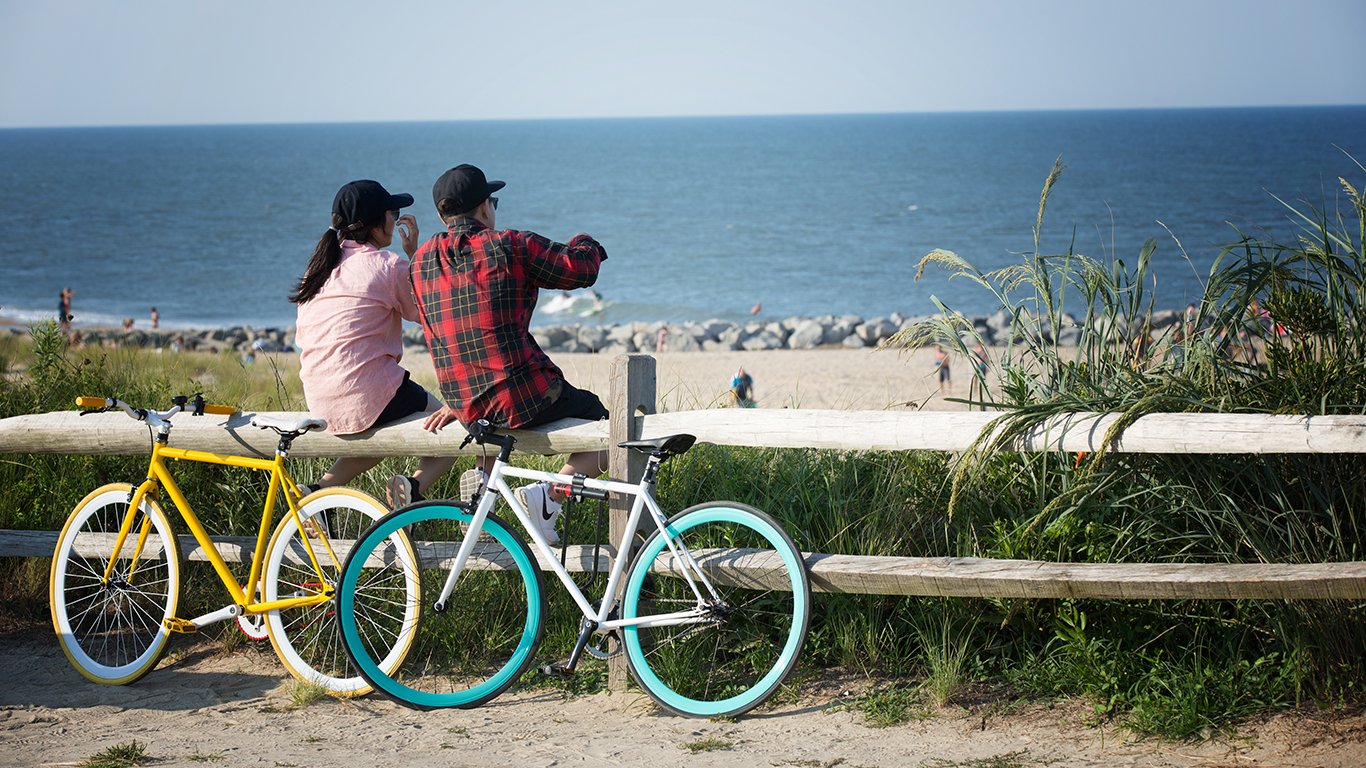
8. Delaware
> Adults who like what they do every day: 55.8% (20th highest)
> Adults in near perfect physical health: 39.3% (12th highest)
> Adults who learned or do something interesting every day: 45.6% (19th highest)
> Adults who get positive energy from friends and family every day: 58.5% (17th highest)
> Poverty rate: 13.6% (3rd highest)
> Violent crime rate: 453 per 100,000 people (4th highest)
See all stories featuring: Delaware

7. Vermont
> Adults who like what they do every day: 59.0% (13th highest)
> Adults in near perfect physical health: 37.6% (17th highest)
> Adults who learned or do something interesting every day: 48.1% (10th highest)
> Adults who get positive energy from friends and family every day: 57.9% (19th highest)
> Poverty rate: 11.3% (8th highest)
> Violent crime rate: 166 per 100,000 people (20th highest)
See all stories featuring: Vermont
[in-text-ad-2]
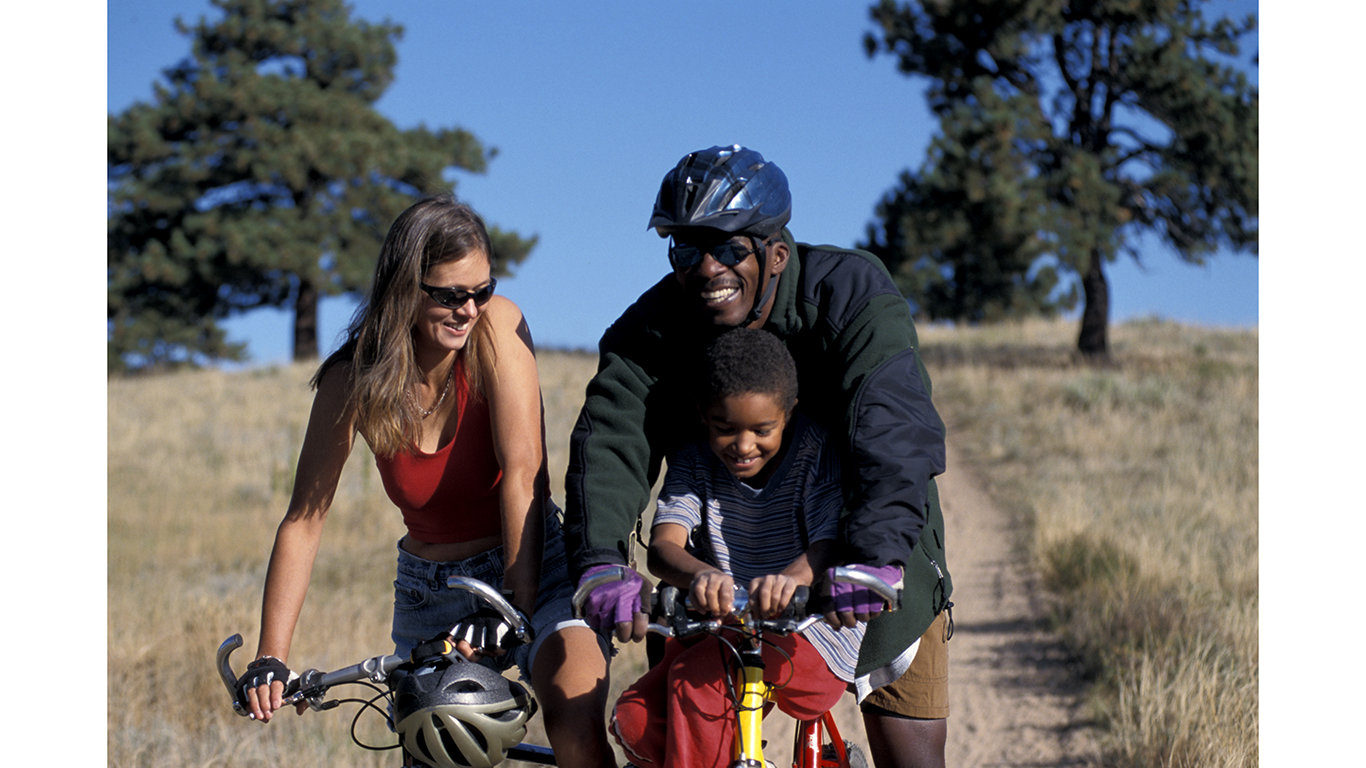
6. Colorado
> Adults who like what they do every day: 59.5% (11th highest)
> Adults in near perfect physical health: 40.8% (7th highest)
> Adults who learned or do something interesting every day: 50.1% (4th highest)
> Adults who get positive energy from friends and family every day: 62.2% (4th highest)
> Poverty rate: 10.3% (14th highest)
> Violent crime rate: 368 per 100,000 people (9th highest)
See all stories featuring: Colorado

5. Utah
> Adults who like what they do every day: 60.3% (7th highest)
> Adults in near perfect physical health: 43.0% (3rd highest)
> Adults who learned or do something interesting every day: 49.1% (7th highest)
> Adults who get positive energy from friends and family every day: 63.1% (3rd highest)
> Poverty rate: 9.7% (16th highest)
> Violent crime rate: 239 per 100,000 people (15th highest)
See all stories featuring: Utah
[in-text-ad]

4. Montana
> Adults who like what they do every day: 65.1% (the highest)
> Adults in near perfect physical health: 38.8% (13th highest)
> Adults who learned or do something interesting every day: 51.4% (2nd highest)
> Adults who get positive energy from friends and family every day: 62.1% (5th highest)
> Poverty rate: 12.5% (7th highest)
> Violent crime rate: 377 per 100,000 people (8th highest)
See all stories featuring: Montana
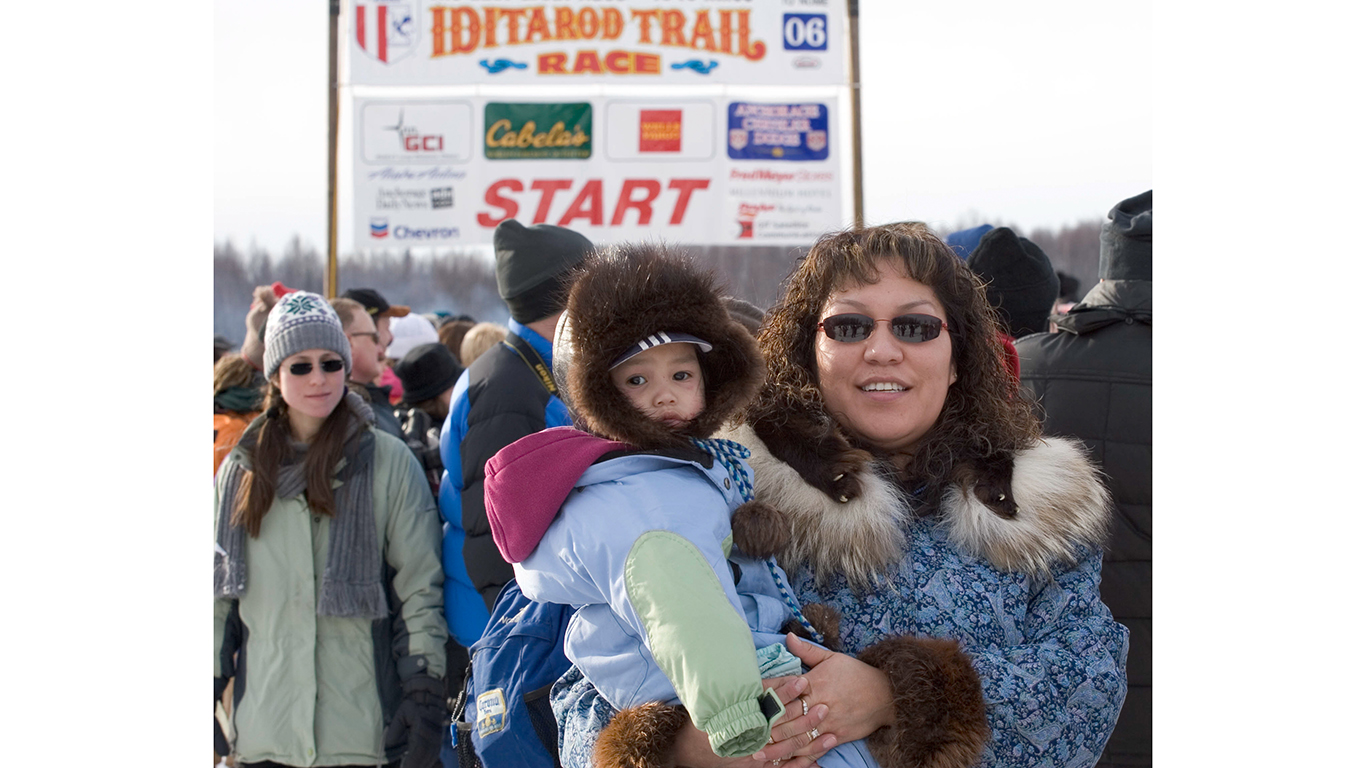
3. Alaska
> Adults who like what they do every day: 60.5% (6th highest)
> Adults in near perfect physical health: 44.5% (the highest)
> Adults who learned or do something interesting every day: 53.1% (the highest)
> Adults who get positive energy from friends and family every day: 64.7% (2nd highest)
> Poverty rate: 11.1% (10th highest)
> Violent crime rate: 829 per 100,000 people (the highest)
See all stories featuring: Alaska

2. Wyoming
> Adults who like what they do every day: 60.8% (5th highest)
> Adults in near perfect physical health: 43.1% (2nd highest)
> Adults who learned or do something interesting every day: 50.1% (4th highest)
> Adults who get positive energy from friends and family every day: 59.8% (13th highest)
> Poverty rate: 11.3% (8th highest)
> Violent crime rate: 238 per 100,000 people (17th highest)
See all stories featuring: Wyoming
[in-text-ad-2]

1. Hawaii
> Adults who like what they do every day: 63.0% (2nd highest)
> Adults in near perfect physical health: 37.4% (18th highest)
> Adults who learned or do something interesting every day: 46.7% (15th highest)
> Adults who get positive energy from friends and family every day: 70.6% (the highest)
> Poverty rate: 9.5% (18th highest)
> Violent crime rate: 251 per 100,000 people (14th highest)
See all stories featuring: Hawaii
Scores in each of the five categories used to determine overall well-being vary greatly across the country. On the state level, the general patterns of well-being remain in place, according to Witters. Hawaii and Colorado are in the top 10 and have been since 2008, and West Virginia is at the bottom for a tenth straight year. Rocky Mountain states score high. The South is home to the most miserable states.
Compared to 2017, men broke even across the five categories used to measure overall well-being. “Women, however, got worse, especially when it came to income, according to Witters. Statements such as “You have enough money to do everything you want to do,” and “In the last seven days, you have worried about money,” which participants agree or disagree with on a scale of 1 to 5, give an insight into how well individuals manage their economic life. Financial security is correlated with external factors such as income. Of the 20 states reporting the highest degrees of financial security, 13 have median household incomes greater than the national median income of $60,336.
People who are thriving in their careers are more likely to be in a better physical shape, have strong ties to their communities, and have strong social relationships.
Connection to one’s community is another important element in overall well-being. Survey respondents were asked to agree or disagree with statements such as “The city or area where you live is a perfect place for you,” and “In the last 12 months, you have received recognition for helping to improve the city or area where you live,” on a scale of 1 to 5 to give an indication of how much they like where they live. Of the 20 states with the strongest sense of community, only two have higher violent crime rates than the national rate.
Methodology
To determine America’s happiest and most miserable states, 24/7 Tempo analyzed the results of the Gallup Well-Being Index. States were ranked based on their overall Well-Being Index score. Survey results from Gallup were paired with other socioeconomic data from the U.S. Census Bureau, the FBI, and other sources. Data on median household income, college and high school attainment, commuting patterns, poverty, households earning less than $10,000 and households earning more than $200,000, and income inequality came from the Census Bureau’s 2017 American Community Survey. Data on violent crime and property crime came from the FBI’s 2017 Uniform Crime Report. All data are for the most recent period available.
Thank you for reading! Have some feedback for us?
Contact the 24/7 Wall St. editorial team.
 24/7 Wall St.
24/7 Wall St. 24/7 Wall St.
24/7 Wall St. 24/7 Wall St.
24/7 Wall St. 24/7 Wall St.
24/7 Wall St.


